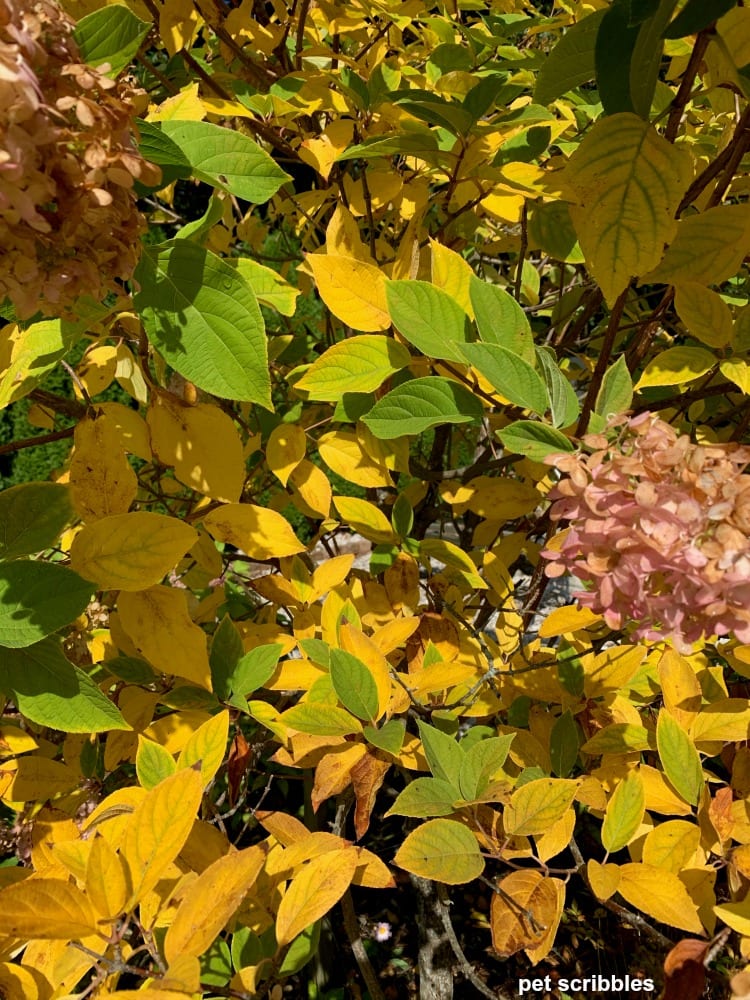The 8-Minute Rule for Hydrangea Leaves Turning Yellow
The 5-Minute Rule for Hydrangea Leaves Turning Yellow
Table of ContentsThe Ultimate Guide To Hydrangea Leaves Turning YellowGetting The Hydrangea Leaves Turning Yellow To WorkHydrangea Leaves Turning Yellow Fundamentals ExplainedIndicators on Hydrangea Leaves Turning Yellow You Should Know
One opportunity is that the plant is not obtaining adequate sunshine. Throughout the cold weather, the days are shorter, and the sunlight is not as extreme, so make certain to put your Hydrangea in an area where it will access least six hours of sunlight each day. One more reason for Hydrangea yellow leaves in winter season might be way too much water.The fallen leaves may be turning yellow due to temperature tension. Hydrangeas like cooler temperatures, so if the plant is in a spot that gets too warm or too cool, the fallen leaves will transform yellow. If you believe temperature stress and anxiety could be the issue, attempt moving your Hydrangea to a various location or securing it from the components with a burlap cover.
New growth will certainly be observed in very early spring, when you'll see environment-friendly foliage growing from stems that could have appeared dead. However, if your fallen leaves are turning brown in springtime or summer season, there are most likely various other elements at play. The precise factors depend on the selection and their growing conditions, but as a whole, brownish hydrangea fallen leaves are a sign of dehydration and wilting in the warm
In the spring when the mercury stays reasonably reduced, they'll do great. When points warm up over the summer nevertheless, time invested in the early mid-day rays can create untold damage.: Grow your hydrangeas in a spot where they'll get sunshine in the early mornings or nights, but not throughout the peak hours.
The Best Strategy To Use For Hydrangea Leaves Turning Yellow
Wilting is caused by lack of moisture, implying there are a few excellent techniques to utilize to avoid this from taking place. Offer your hydrangeas a healthy and balanced glug of water every couple of days when the temperature levels are climbing up high, and deal with the dirt to much better retain dampness. After watering, a dab of mulch around the base of each plant ought to assist with this by keeping moisture in the soil.
This disrupts fungi spores from clearing up. "The Botrytis fungus thrives in amazing and damp conditions, so prevent showering the whole plant when watering and simply water at the origins," shares Roy Nicol, a Master Green thumb - Hydrangea Leaves Turning Yellow. If you have actually missed out on the opportunity for avoidance and are dealing with an infection you ought to eliminate all dead or seriously infected leaves from the plant and damage them to stop additional spread
As a general policy of thumb, we suggest eliminating fallen leaves when they are 50% brown or higher. While browning brought on by any kind of factor can't be reversed, taking the rehabilitative action explained above will encourage the plant to grow brand-new fallen leaves so the damaged fallen leaves either diminish normally or can be eliminated by the gardener.
Hydrangeas ought to be sprinkled only when the leading couple of inches of soil are completely dry, and need to be provided an extensive saturating each time. Underwatered hydrangeas are most likely to have yellow, wilting, and sagging leaves.
Some Ideas on Hydrangea Leaves Turning Yellow You Should Know
The means you repair hydrangea leaves transforming yellow relies on hop over to here the essential concern causing the yellow leaves. This can be hard to figure out, once you do you will certainly have the ability to adjust your plant care as necessary to take care of the issue. As mentioned before, a typical concern with hydrangeas is nutrient deficiencies.
Throughout the optimal growing season, you need to water at a rate of concerning 1 inch each week. If you are stressed over not appropriately sprinkling your hydrangeas, there are a couple of things you can do. Adding compost to the base of the plants over the origin zone aid to control the temperature level around the bush and maintain water in the soil.

If it is as well severe, some plants will never ever recover from transplant shock and will remain to decline until they die. Lessen transplant shock by consisting of as several origins as possible when digging up your plant to move it. Make sure to offer more water than normal in the weeks adhering to growing to aid your plant recoup and expand brand-new roots.
The 20-Second Trick For Hydrangea Leaves Turning Yellow
To stay clear of spreading fungal conditions, be certain to thouroughly clean and sanitize any kind of pruning tools before and after use. Finally, you can try to purge the origins with water to get rid of excess fertlizer.

If you don't sprinkle your hydrangea plant for more than a week, the fallen leaves will certainly begin transforming yellow. Fungal diseases that strike the plants tend to show indications on the origins and the leaves of the plant.
Root rot occurs when virus use up the origin cells as hosts and stop the cell from functioning. If not taken treatment of, this disease can at some point cause the plant dying. Leaf place is one more fungal condition that can target hydrangea. It results in the fallen leaves transforming yellow and the appearance of brown and purple places on the leaves.